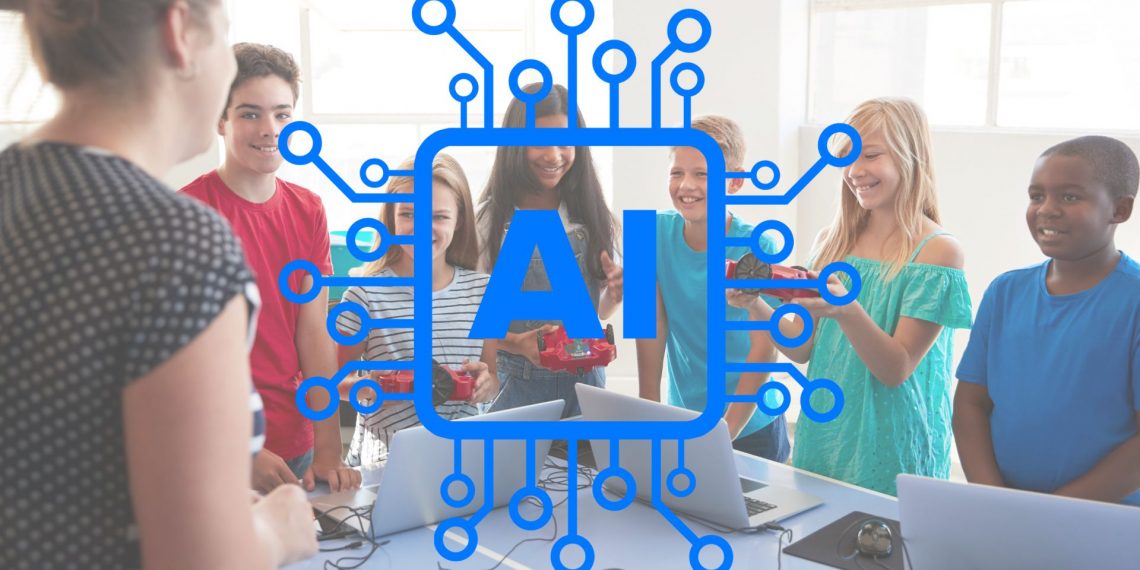The ethical implications of AI in education include avoiding bias and encouraging bias. Biased or unfair AI can have severe consequences for both individuals and society, perpetuating existing inequalities, and creating new ones AI developments are often driven by the goal of improving efficiency and productivity, without measurement of the greater potential ethical implications of this technology in development, the more important it is to consider ethics first.
Biases in AI can be subtle and complex. Machine learning algorithms trained on biased data sets, can perpetuate existing inequalities and adversely affect individuals and society because, as an AI-powered credit score system, it is biased against certain groups so, it can perpetuate economic inequality and make it harder for individuals in these groups to do gain prestige.
To get over these challenges, it is important to encourage and promote responsible AI development that considers AI’s ethical implications and requires transparent, accountable regulation. There are strategies to encourage responsible AI development including bias identification and reduction, fairness testing, transparency and transparency, and ethical management principles leading to efficient implications of AI.
Identifying and reducing bias involves identifying potential sources of bias in AI systems and developing strategies to reduce them. This may require careful data selection, reweighting, or the use of techniques such as adversary training. Fairness testing uses techniques such as statistical accuracy, equal opportunity, or equal odds to ensure that the AI system is fair and unbiased Transparency and explainer design is used.
The moral implications of AI in academia are extensive and require careful consideration to make certain the maintenance of meaningful human activities and the accountable use of AI technology.
Some key moral issues include:
- Bias and equity: AI structures are educated on records, and if these facts are biased, the algorithms can perpetuate and amplify these biases, main to unfair results. Ensuring that AI structures are trained on diverse and representative datasets is vital for promoting fairness and reducing the capacity damage added with the aid of biased algorithms.
- Transparency and explainability: AI systems can be complicated and hard to apprehend, making it challenging to identify and cope with biases. Developing explainable AI strategies and interpretable fashions is critical for promoting transparency and know-how in the selection-making process of AI systems.
- Regulation and responsibility: Regulatory frameworks are lagging in the back of technological improvements in AI, making it vital for enterprise experts and stakeholders to set up transparency and accountability in organizational practices. This can be executed through measures such as commencing data for sharing, documenting algorithms, defining moral hints, and encouraging public engagement through initiatives.
- Interdisciplinary collaboration: Addressing the challenges confronted in the field of AI calls for fostering interdisciplinary collaboration among specialists in various fields, along with laptop technology, ethics, and social sciences.
- Standardized assessment metrics: Establishing standardized evaluation metrics for AI structures is vital for ensuring that they are honest and independent. This can help perceive capacity assets of bias and enable the implementation of effective countermeasures.
- Continued efforts: Continued efforts are important to conquer the challenges confronted inside the subject of AI, including the requirement for explainable AI techniques, fostering interdisciplinary collaboration, and creating requirements for ethical AI practices.
To promote equity and transparency in AI systems, strategies consisting of various consultant statistics, bias detection and mitigation, interpretable fashions, and regular auditing may be employed. Additionally, transparency in organizational practices, inclusive of starting records for sharing, documenting algorithms, defining ethical recommendations, and encouraging public engagement through tasks, can assist make sure that AI is used responsibly, ethically, and for the gain of all.

Some examples of AI structures that have been accused of being biased or unfair encompass:
- Facial popularity systems: Facial popularity structures were shown to be carried out poorly whilst recognizing people from racial or ethnic businesses, due to a disproportionately high variety of fake fine identifications and contributing to the unfair remedy of individuals.
- Credit scoring systems: AI-powered credit scoring systems have been accused of being biased towards positive corporations, perpetuating financial inequality and making it difficult for individuals in those businesses to get entry to credit.
- Medical algorithms: Machine-gaining knowledge of algorithms and information applied in clinical fields have now not impacted all sufferers similarly, with researchers finding evidence of a healthy volunteer choice bias and different existing biases in the facts used inside the medical area.
- Predictive policing systems: Predictive policing structures are based totally on preceding, probably falsified or corrupted police information, perpetuating current sorts of racialized discrimination and leading to racial profiling and even illegal arrests.
- AI chatbots: AI chatbots were shown to show off discriminatory behavior, such as showing bias in employment matching, flight routing, automatic felony resource for immigration algorithms, and seek and advertising placement algorithms.
In conclusion, there is a need to actively develop strategies for absorbing and selling deep learning to university students in the classroom. By integrating active knowledge with strategies, teachers can help students develop their critical questioning and problem-solving abilities, develop informal communication and voice, and expand communicative thinking in discourse in the room. When implementing lively getting-to-recognize strategies, it’s miles important to design sports activities around reading effects, be clear about how sports relate to getting to know results and offer timely comments to college students. By getting started out with active information of strategies, teachers can create more appealing and effective getting-to-know surroundings for his or her university students.




